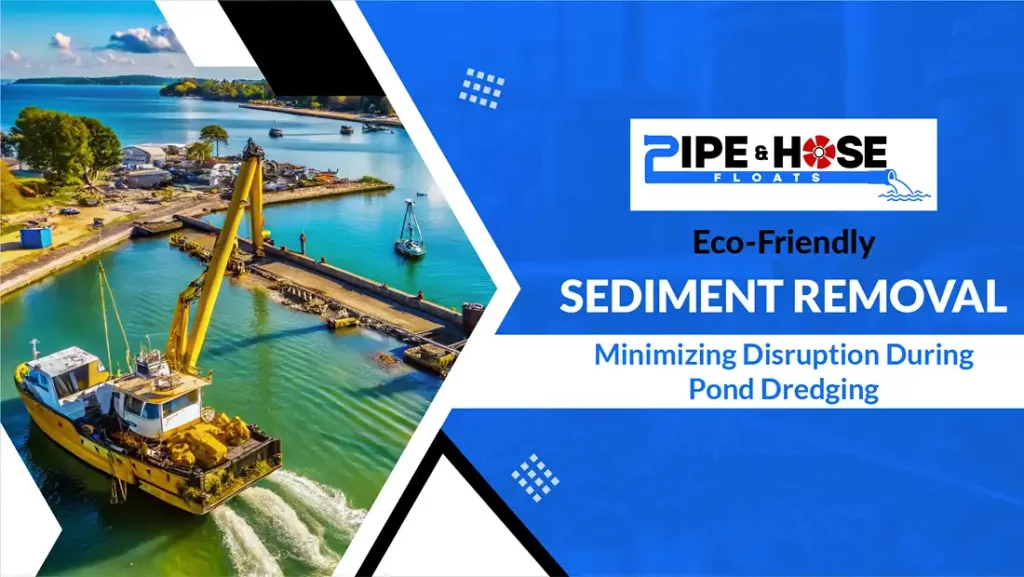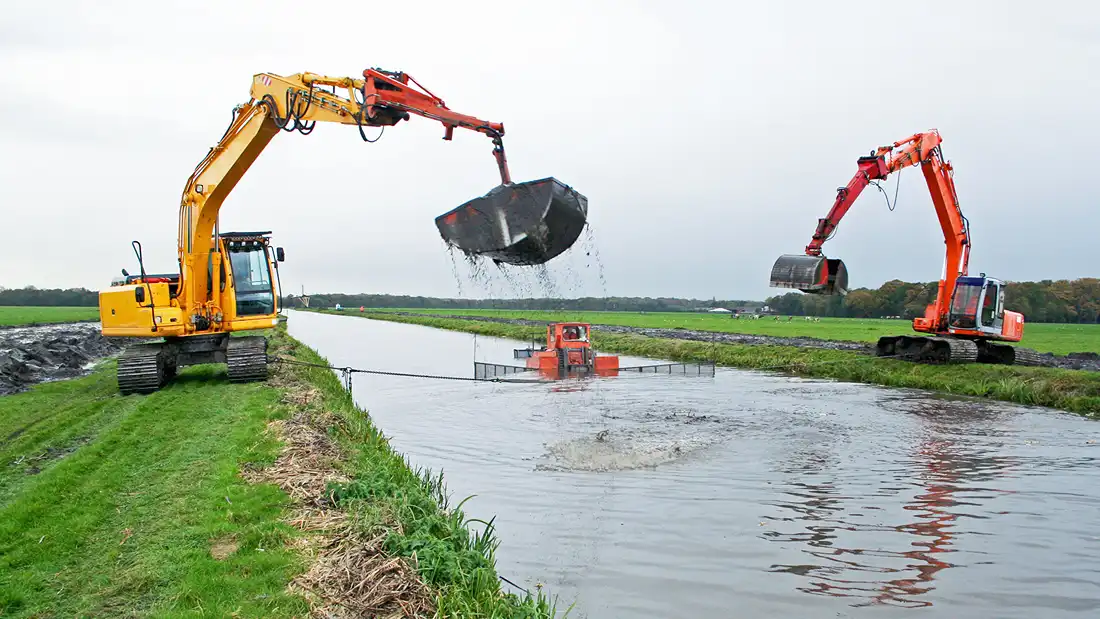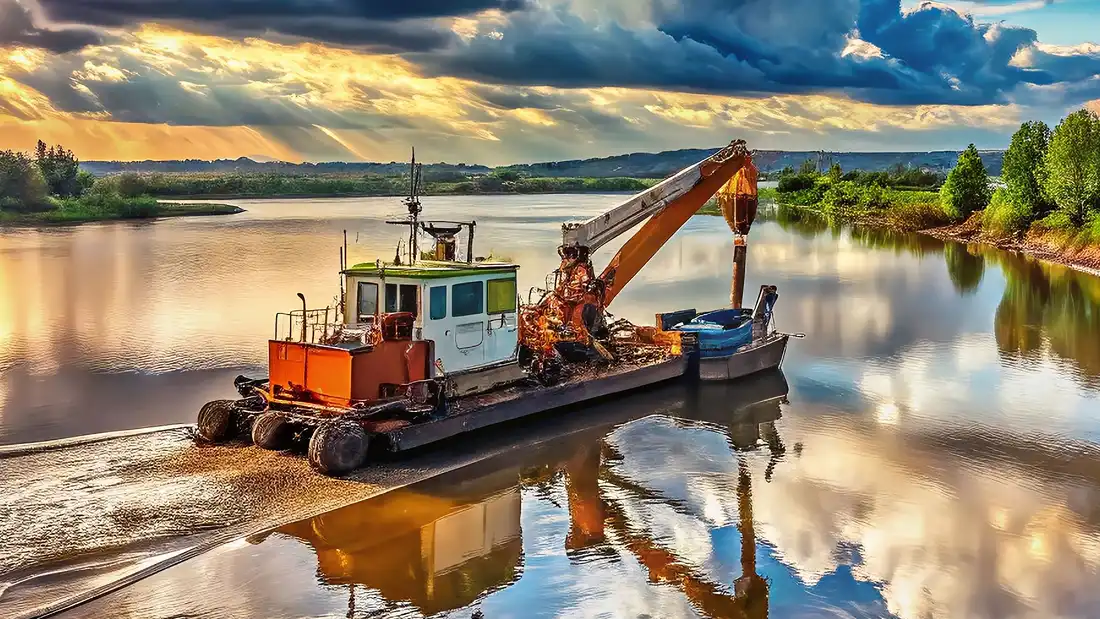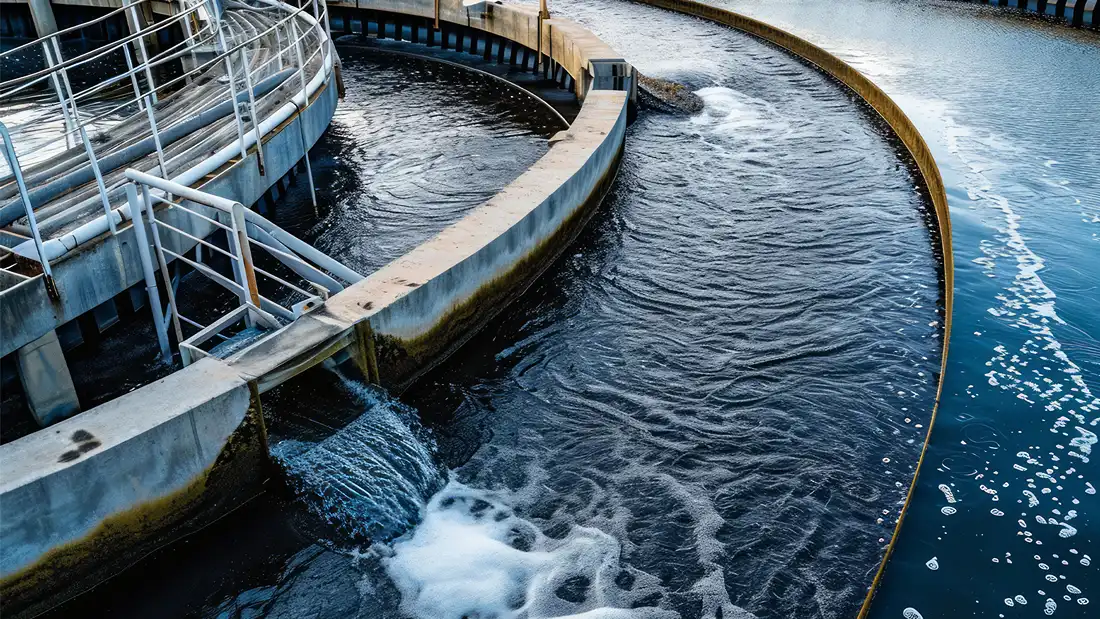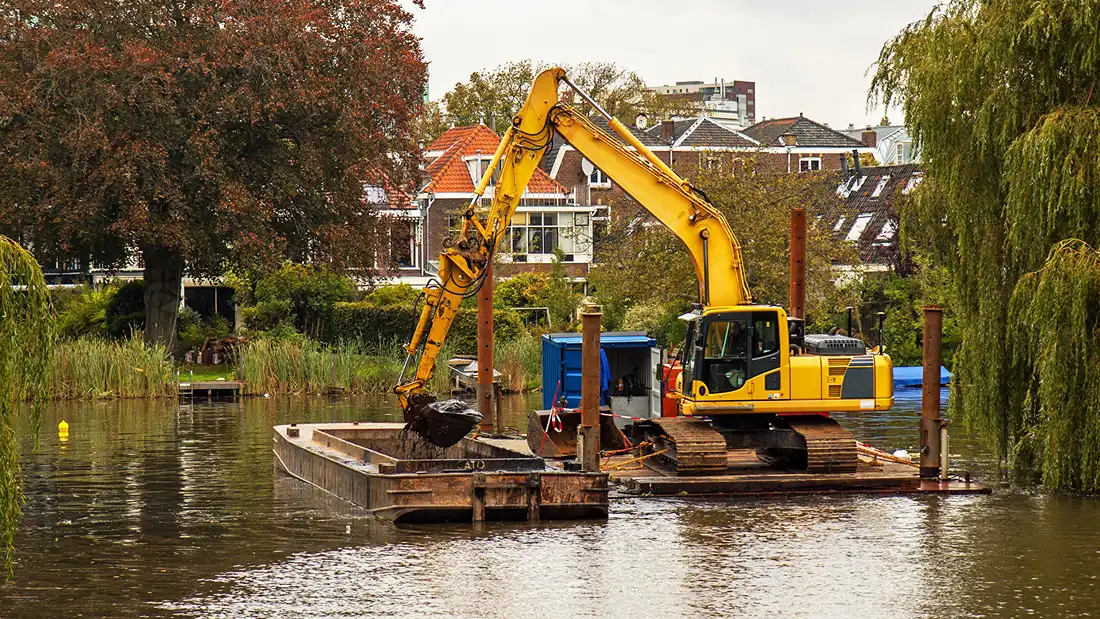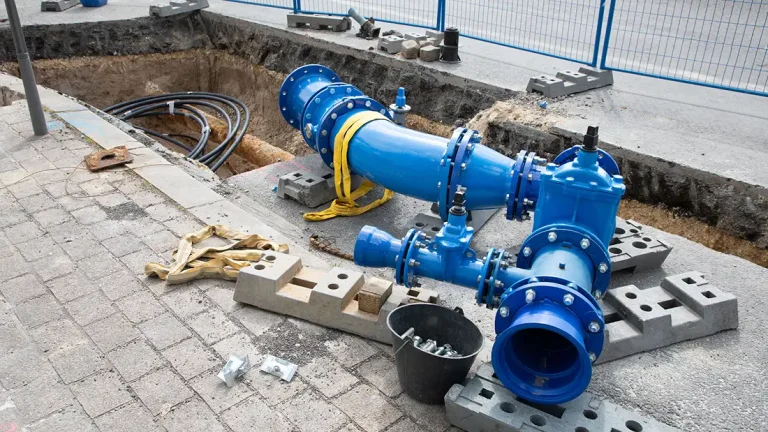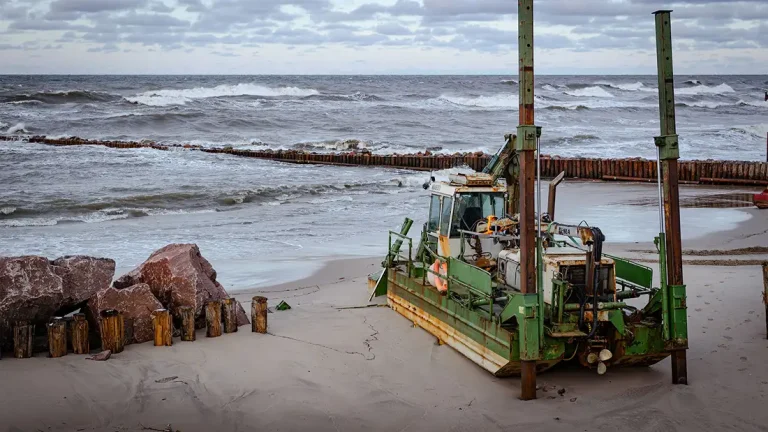Overview of Pond Dredging
Pond dredging is essential for maintaining the health of aquatic ecosystems. Over time, ponds, lakes, and lagoons accumulate sediment, obstructing water flow, reducing oxygen levels, and harming aquatic life. The primary goal of sediment removal is to restore the natural balance of the water body, improving water quality and ecosystem health. However, traditional methods often cause significant disruption, both to the environment and the surrounding area.
Significance of Eco-Friendly Sediment Removal
As environmental awareness grows, the need for eco-friendly sediment removal techniques has become paramount. Traditional methods of sediment removal, such as mechanical dredging and chemical treatments, can lead to long-lasting damage to aquatic environments. Eco-friendly sediment removal methods focus on minimizing disruption, reducing water turbidity, and preserving local ecosystems while effectively addressing the issue of excessive sediment accumulation.
Understanding Sediment Accumulation in Ponds
What is Sediment?
Sediment consists of particles, including sand, silt, clay, and organic matter, that settle at the bottom of water bodies. Over time, natural processes such as water flow and erosion contribute to sediment buildup. In ponds, excessive sediment can result from surrounding land activities, agricultural runoff, and poor water management.
Why Sediment Builds Up
While sediment accumulation is a natural process, human activities like construction, land development, and industrial runoff can accelerate the process. Additionally, excessive nutrient levels from fertilizers and organic material lead to sediment compaction, creating a deeper layer of sludge that requires removal. If left untreated, this buildup can hinder water circulation, block sunlight, and decrease oxygen levels in the water, affecting fish and plant life.
Signs That Sediment Removal is Needed
The need for sediment removal becomes evident when water quality diminishes. Signs of excessive sediment include murky water, reduced fish populations, foul odors, and poor water circulation. If not addressed promptly, these issues can lead to ecosystem imbalances, making sediment removal essential for the health of the pond.
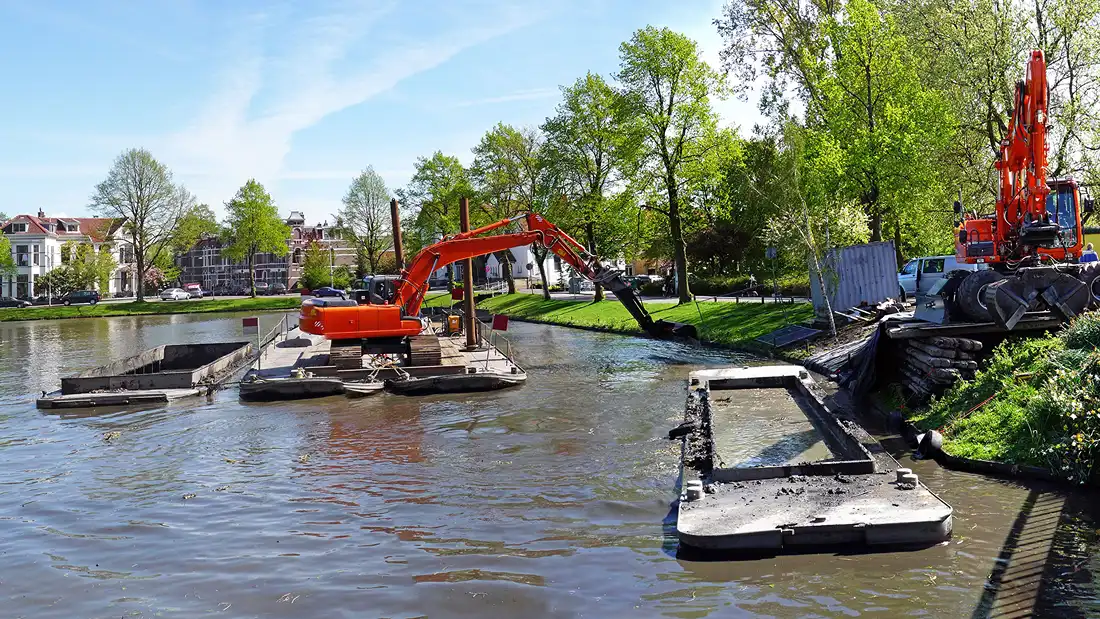
Traditional Sediment Removal Methods
Mechanical and Chemical Sediment Removal: Challenges and Disruptions
Sediment removal is an essential process in maintaining the health of ponds, lakes, and other water bodies. Over time, excessive sediment accumulation can cause several environmental problems, including poor water circulation, reduced oxygen levels, and hindered aquatic life. Two traditional methods commonly used for sediment removal are mechanical dredging and chemical sediment removal. While both can be effective, they come with significant drawbacks that can harm the aquatic ecosystem in the long run.
Mechanical Dredging for Sediment Removal
Mechanical dredging is one of the most widely used techniques for sediment removal. This method involves the use of large machinery such as excavators, dredging buckets, or suction dredgers to physically remove sediment from the bottom of a pond or water body. The equipment scoops up sediment and transports it to a designated disposal area.
While mechanical dredging can clear large volumes of sediment quickly, it is highly disruptive to the surrounding ecosystem. The process of removing sediment from the bottom disturbs the aquatic environment, causing a significant increase in water turbidity. The resuspension of sediment in the water leads to murky conditions, which can block sunlight from reaching aquatic plants, affecting their ability to photosynthesize. Moreover, the increase in turbidity harms aquatic life, particularly fish and other organisms that rely on clear water for survival.
Additionally, mechanical dredging can cause long-term damage to the pond’s ecosystem. The physical disturbance of the water body’s bottom can destroy habitats for various organisms, including fish and invertebrates. The surrounding land may also be negatively impacted, as the dredging process can result in erosion, further harming the stability of the environment. While mechanical sediment removal is effective in the short term, the negative environmental impacts it creates make it a less desirable option in many cases.
Chemical Sediment Removal: A Risky Solution
Chemical sediment removal is another technique that involves the use of chemicals to break down or facilitate the removal of sediment from a water body. Chemicals such as coagulants, flocculants, or other chemical agents are introduced into the water to alter the properties of the sediment, making it easier to remove. While chemical treatments can be effective in certain situations, they pose significant risks to the environment.
One of the most serious issues with chemical sediment removal is the potential harm it can cause to aquatic life. Many chemicals used in sediment removal are toxic to fish, plants, and other organisms living in the water. The introduction of these substances can lead to a chemical imbalance in the ecosystem, which may result in the death of aquatic species or long-term harm to their reproductive capabilities.
Another concern is the contamination of the water with harmful substances. Chemicals used in sediment removal can sometimes persist in the environment, leading to contamination of the water, soil, and even the surrounding land. This makes the water unsafe for both animals and humans, particularly when it is used for recreational purposes or as a water source.
Disruptions Caused by Traditional Sediment Removal Methods
Both mechanical and chemical sediment removal methods have inherent disruptions that can cause long-term harm to the ecosystem. Mechanical dredging increases sediment resuspension, making the water turbid and damaging the habitat for aquatic organisms. The physical disturbances caused by the machinery can lead to land erosion, habitat destruction, and a reduction in biodiversity.
Similarly, chemical treatments disrupt the natural balance of the ecosystem. While they may help in the short term by removing sediment, they can cause long-lasting damage to water quality, disrupt the food chain, and harm plant and animal life. The use of toxic chemicals in sediment removal can contaminate the water and soil, leading to hazardous conditions for both aquatic species and human populations who rely on the water source.
Eco-Friendly Sediment Removal Techniques
Hydraulic Dredging
Hydraulic dredging is an eco-friendly alternative to traditional mechanical dredging. This method uses high-pressure water jets to suspend sediment and move it through pipes to a containment area. It is less disruptive than mechanical dredging because it minimizes physical disturbance of the pond bottom. Hydraulic dredging also reduces water turbidity, ensuring that the water remains clearer, which helps preserve the surrounding aquatic ecosystem during sediment removal. This method is effective for both small and large-scale sediment removal projects, including dam sediment removal, where the impact of traditional methods would be highly disruptive.
Bioremediation
Bioremediation is an innovative approach that uses natural processes to treat sediments by introducing biological agents such as bacteria or fungi that break down contaminants within the sediment. These organisms degrade organic matter and pollutants, making them an effective tool for sustainable sediment removal. Bioremediation is a slow but environmentally friendly process, offering a long-term solution that minimizes disruptions to the pond’s ecosystem. This method can also be used in industrial lagoon sediment removal projects, where high levels of organic waste and pollutants require natural treatment.
Phytoremediation
Phytoremediation is the process of using aquatic plants to absorb excess nutrients and pollutants from sediment. Certain types of aquatic plants, such as cattails and reeds, can help reduce nutrient levels and prevent further sediment accumulation. This method not only helps remove sediment but also promotes biodiversity by creating habitats for wildlife. By improving water quality and reducing sediment levels, phytoremediation offers a sustainable and low-impact solution to pond and lagoon management.
Sediment Dewatering
Sediment dewatering techniques, such as the use of geotextile tubes or centrifugation, are essential for containing and safely removing sediments. These methods focus on reducing the volume of water in sediment deposits, making the disposal process easier and more efficient. Once sediment is removed, it can be treated or disposed of in an environmentally responsible manner. Sediment dewatering is particularly useful in large-scale projects like industrial lagoon sediment removal, where managing and safely disposing of large quantities of sediment is crucial.
Benefits of Eco-Friendly Sediment Removal
Minimal Disruption to Ecosystems
One of the primary benefits of eco-friendly sediment removal techniques is the minimal disruption to ecosystems. Unlike traditional mechanical dredging methods, which physically disturb the pond bottom and surrounding habitats, eco-friendly methods such as hydraulic dredging and phytoremediation cause little to no disturbance. This ensures that the pond’s ecosystem remains intact, supporting a healthy aquatic environment for plants, fish, and other wildlife.
Improved Water Quality
Eco-friendly sediment removal methods lead to long-term improvements in water quality. By reducing nutrient levels and organic waste, these methods help restore balance to the pond’s ecosystem. As a result, water quality improves, which benefits all aquatic life and makes the pond or lagoon healthier overall. Clearer water, reduced algae blooms, and healthier fish populations are just some of the results of eco-friendly sediment removal.
Cost-Effectiveness
While the upfront cost of eco-friendly methods may be higher than traditional dredging, the long-term savings are significant. Eco-friendly sediment removal techniques like bioremediation and phytoremediation offer ongoing benefits with minimal maintenance. Moreover, reducing sediment accumulation and improving water quality can reduce the need for future dredging, saving money over time.
Compliance with Environmental Regulations
Eco-friendly sediment removal methods help ensure compliance with environmental regulations. Many regions have strict rules regarding water quality and sediment management, and using sustainable techniques can help avoid fines and legal issues. Adopting eco-friendly practices demonstrates a commitment to environmental stewardship, which can improve a company’s reputation, especially in industrial lagoon sediment removal projects.
How to Choose the Right Sediment Removal Method
Factors to Consider When Selecting a Sediment Removal Method
Choosing the right sediment removal method requires careful consideration of several factors. These elements play a crucial role in determining the most effective approach while ensuring minimal environmental disruption and long-term success.
Size of the Pond or Lagoon
One of the primary factors to consider is the size of the pond or lagoon. Larger bodies of water, such as lakes or extensive industrial lagoons, often require more robust techniques for sediment removal, like hydraulic dredging or mechanical dredging. These methods can handle large volumes of sediment and are effective in deeper waters where other methods may not be as feasible. Smaller ponds or confined water bodies, on the other hand, may benefit from less invasive approaches, such as bioremediation or phytoremediation, which focus on restoring water quality naturally without the need for extensive equipment.
Type of Sediment
The type of sediment present in the water body is another important consideration. Sediment varies in composition, with different types including sand, silt, clay, organic matter, and pollutants. Sediment removal techniques must be tailored to the characteristics of the sediment in question. For instance, organic sediment and nutrient-rich sludge may be more effectively treated through bioremediation, where microorganisms or plants break down contaminants. In contrast, more compact or inorganic sediment may require mechanical or hydraulic dredging to physically remove it. Understanding the sediment type ensures that the right method is selected for efficient removal.
Environmental Sensitivity of the Area
The environmental sensitivity of the area plays a significant role in the choice of sediment removal technique. Sensitive ecosystems, such as wetlands or habitats for endangered species, require minimal disruption to maintain their integrity. In these cases, eco-friendly methods like phytoremediation or hydraulic dredging are ideal since they cause minimal disturbance to the surrounding environment. In contrast, areas less sensitive to disruption may be suitable for more traditional techniques like mechanical dredging. Understanding the ecosystem’s needs is crucial to avoid long-term harm to the local biodiversity.
Budget Considerations
Lastly, the budget available for sediment removal projects can influence the choice of method. Eco-friendly techniques like bioremediation or phytoremediation may have lower upfront costs but take longer to show results. In contrast, mechanical or hydraulic dredging can be more expensive initially due to the equipment and labor required. It’s important to weigh the long-term benefits of eco-friendly methods, such as reduced maintenance costs and improved water quality, against the immediate costs of more traditional approaches.
Consulting with Experts
To ensure the success of sediment removal, it is vital to consult with professionals who specialize in eco-friendly sediment management. Experts in this field can assess the specific needs of the pond or lagoon, taking into account the size, sediment type, and environmental sensitivities. By working with experienced consultants and contractors, you can ensure that the chosen method not only meets environmental goals but also complies with regulatory standards. Their expertise can help streamline the process, making it more efficient, cost-effective, and sustainable in the long run.
Conclusion
Summary of Eco-Friendly Sediment Removal Techniques
In summary, eco-friendly sediment removal techniques offer a sustainable alternative to traditional dredging methods. From hydraulic dredging and bioremediation to phytoremediation and sediment dewatering, these methods help reduce environmental disruption while effectively addressing sediment accumulation. Choosing the right technique depends on the specific needs of the pond or lagoon, with expert guidance ensuring the best outcome.
Encouraging Sustainable Practices
As awareness of environmental issues grows, adopting eco-friendly sediment removal techniques is crucial for maintaining healthy water ecosystems. Sustainable methods protect the environment, improve water quality, and contribute to long-term ecosystem restoration. By selecting the right sediment removal approach, pond and lagoon managers can ensure cleaner, healthier water for future generations.

